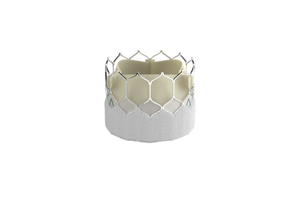Top 10 Medical Device Hazards for 2012
January 3, 2012
|
Tubing misconnections are among the top 10 most hazardous medical device technologies for 2012, according to ECRI Institute. |
As 2011 drew to a close, we were again bombarded with a barrage of newspaper articles, Web sites, TV shows, and radio programs touting the best this and the greatest that. But now, the ECRI Institute (Plymouth Meeting, PA) has taken hyperbole to a new level, publishing a report highlighting the medical device world's "Top 10 Technology Hazards for 2012."
The institute's list of hazards includes a range of medical devices and related technologies that offer countless benefits and numerous risks, including alarm hazards, exposure hazards from radiation therapy and CT, drug-delivery errors involving the use of infusion pumps, cross-contamination associated with the use of flexible endoscopes, inattention to change management for medical device connectivity, enteral feeding misconnections, surgical fires, needlesticks and other sharps injuries, anesthesia hazards resulting from incomplete preuse inspection, and poor usability of home-use medical devices. Dangerous though they are, most of these hazards can be avoided, according to the institute. But it takes work.
The institute prepares a new list annually based on the following factors:
How harmful is the hazard? Can it kill or seriously injure a patient?
How likely is it to occur? Does it happen often, or only very rarely?
How widespread is it? If it occurs, is it likely to affect a great many people, or will its effects be contained?
Is it a high-profile problem? Has it been reported in the media, and is a facility likely to be under pressure to deal with it quickly and conspicuously?
While emphasizing hazards caused by the improper use of medical devices by healthcare personnel, the report is a must-read for manufacturers of medical devices as well because it focuses attention on the need to design devices with the aim of reducing the incidence of user errors. For example, while infusion pump safety has improved over the years, preventable errors, including misprogramming steps, still occur. Addressing this issue, FDA issued a white paper in April 2010 highlighting the need to improve infusion pump technology. By understanding the technology-related problems that arise in hospitals and clinics, designers and manufacturers of medical device can contribute to improving healthcare outcomes, and the ECRI report can contribute to this knowledge base.
Another case in point is enteral feeding tube misconnections. Such misconnections usually occur when nutrients intended for the GI tract are inadvertently delivered elsewhere in the body or when inappropriate fluids such as IV solutions are inadvertently delivered to the GI tract. The first hazard is the more critical one because it can result in death, usually as a result of embolus or sepsis.
In 2005, a voluntary standard was introduced to reduce the risk of misconnecting enteral administration sets to unintended medical lines that employ a female luer connection. However, this standard has done little to prevent misconnections, in part because it is voluntary and does not prohibit the use of adapters that can be used to connect lines that are not meant to be connected.
To address the dangers associated with enteral misconnections, FDA wrote a letter in July 2010 urging manufacturers to implement color-coding safeguards and to build "designed incompatibility" into their products to help reduce or prevent misconnections. Currently, the International Organization for Standardization is working on a standardized enteral connector that will eventually have to undergo bench and clinical testing. As in the case of infusion pumps, the ECRI report could aid manufacturers in developing new connection technologies that help reduce the incidence of dangerous misconnections. Providers of medical device connectors, such as Value Plastics Inc., are already beginning to develop such technologies.
ECRI Institute's "Top 10 Technology Hazards for 2012" is directed primarily at medical practitioners and hospital administrators, but it also provides manufacturers with valuable insight into how they can design and build medical device technologies with greater benefits and fewer risks. --Bob Michaels
About the Author(s)
You May Also Like


.png?width=300&auto=webp&quality=80&disable=upscale)
